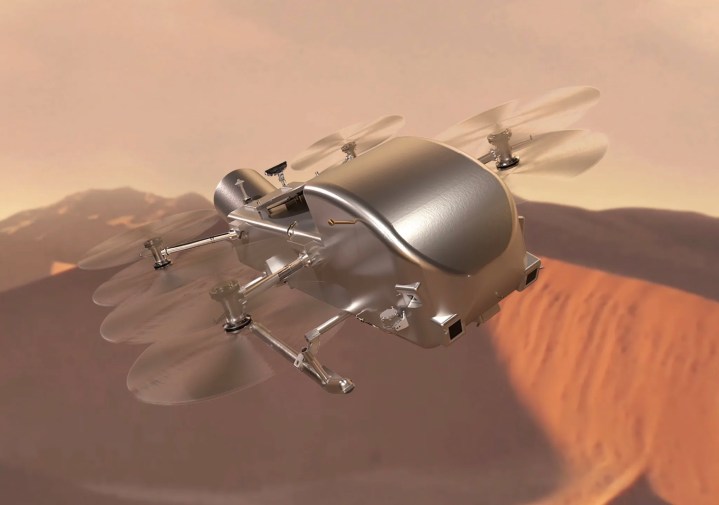
A decision by NASA this week paved the way for the Dragonfly drone mission to continue to completion.
The aim is to land the car-sized drone on Saturn’s largest moon, Titan, in 2034, six years after it launches from Earth.
Lockheed Martin, which is part of the Dragonfly team led by the John Hopkins University Applied Physics Laboratory, shared a video showing the cool way in which Dragonfly will reach Titan’s surface in 10 years’ time.
Titan your seatbelts!@NASA has confirmed that development of the Dragonfly rotorcraft will continue into final design, construction and testing as it progresses toward its historic mission to Saturn's moon Titan, launching in July 2028.
We are excited to help bring Dragonfly… pic.twitter.com/v1oiElI8fx
— Lockheed Martin Space (@LMSpace) April 18, 2024
As you can see, the spacecraft that transports Dragonfly from Earth will release the drone close to Titan’s surface. The drone will then immediately fire up its rotors to help it achieve what should be a smooth, controlled landing.
In some ways, the process looks similar to how NASA landed the Perseverance rover on Mars in 2021, a dramatic event that was captured by high-definition cameras. However, the Perseverance landing was more complicated as it involved the spacecraft firing up eight small rockets to slow its descent in the final stages before setting the rover down with cables.
Though Dragonfly’s landing certainly appears to be more straightforward, you can guarantee that mission controllers on landing day will still be sweating it as they wait for confirmation of Dragonfly’s successful touchdown.
Titan bears some similarities to the very early Earth and so it’s hoped that science research carried out by the drone will help scientists to learn more about how life started on our planet. The drone won’t be the first aircraft to fly on a celestial body other than Earth, as that feat was achieved by NASA’s Ingenuity helicopter, which traveled to Mars with Perseverance. The huge success of Ingenuity’s mission, which officially ended earlier this week following 72 flights on the red planet, has given a big boost to the team prepping Dragonfly for Titan.
The Dragonfly mission was selected as part of NASA’s New Frontiers program, which includes the already-launched New Horizons mission to Pluto and the Kuiper Belt, the Juno mission to Jupiter, and the OSIRIS-REx mission to the asteroid Bennu.


